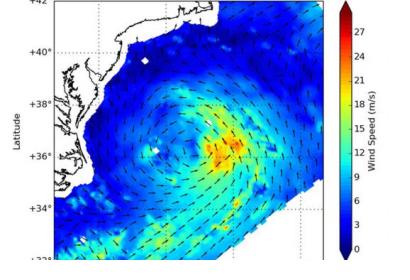United
Nations
Office for Outer Space Affairs
UN-SPIDER Knowledge Portal
The third Atlantic Tropical Storm of the season, Claudette, has been monitored by the RapidScat instrument that flies aboard the International Space Station.
As explained in NASA’s website: “RapidScat gathered surface wind data on the newborn Tropical Storm Claudette on July 13 from 6:31 to 9:36 UTC (2:31 a.m. to 5:36 a.m. EDT). RapidScat data showed that former System 92L had sustained winds near 24 meters per second (m/s) (53.6 mph/ 86.4 kph) in its eastern quadrant, and winds to 18 m/s (40.2 mph/64.8 kph) from the northern to southern quadrants. Winds in the western quadrant were 6 m/s (13.4 mph/21.6 kph) or less.”
The RapidScat instrument allows monitoring the movements of the newborn Claudette as well as the increase on the speed and potential weakening. This helps to predict the consequences it can cause and therefore mitigate the damages.
As a replacement for NASA’s QuickScat Earth satellite, the ISS-RapidScat is in charge of measuring Earth's ocean surface wind speed and direction.
